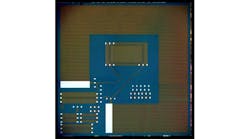As wireless data traffic increases, more and more solutions are being sought to relieve the stress put on wireless networks. One much-discussed option is the unlicensed bandwidth in the 60-GHz range. As part of the National Science Foundation’s (NSF) Networking Technology and Systems (NeTS) program, a grant has been awarded to explore the 60-GHz band in order to better understand its characteristics and develop effective protocols for future networks.
This file type includes high resolution graphics and schematics when applicable.
The $500,000 NSF award was given to two individuals: NYU-Poly Electrical and Computer Engineering Chair, Ted Rappaport, and Professor Shiwen Mao of Auburn University. They will lead research teams, comprised of professors and students from the NYU WIRELESS research center, in developing modeling and control techniques for new antennas. Those antennas will be used in millimeter-wave bands including the 60-GHz spectrum. Mao and Rappaport also aim to create new network protocols and multimedia communications techniques for 60-GHz networks.
One of the team’s proposed solutions is an on-chip antenna. In the IEEE paper, “State of the Art in 60-GHz Integrated Circuits and Systems for Wireless Communications,” Rappaport and two students discussed integrating and combining antennas directly on chips for future subterahertz communications devices. The report states, “While radiation losses are extremely large due to substrate absorption and conductive currents, the removal of all connections between RF circuits and the antenna offers substantial cost reduction and flexibility in circuit design for low-cost consumer electronics.”
The paper goes on to say that although typical on-chip antennas have only 10% efficiency and negative gain, high-gain antenna structures can be designed and fabricated on chip in sub-millimeter sizes. This is possible by using frequency-selective surfaces or highly directional antennas, such as Yagi or rhombic antennas. Such antennas could then be used in large antenna arrays.
This project is part of a global effort to make use of the huge, license-free pieces of spectrum for cellular and backhaul networks. The research could accelerate the deployment of more powerful, bandwidth-intensive, and cheaper wireless applications and services. Those applications and services, in turn, could support more versatile, robust, and multimedia-rich wireless networks.
This is the second NeTS grant that has supported NYU-Poly’s research in the millimeter-wave spectrum. The previous grant, for $1.2 million over four years, supported research to advance broadband connections through millimeter-wave networks. The Federal Communications Commission (FCC) also has delved into millimeter-wave technology, recently modifying the rules for outdoor 60-GHz devices. Changes included altering the rules that could potentially connect broadband networks and WiFi without the need of fiber lines.
Information for this article was also gathered from the NYU WIRELESS presentation, "The Renaissance of Wireless Communications in the Massively Broadband Era."
This file type includes high resolution graphics and schematics when applicable.

